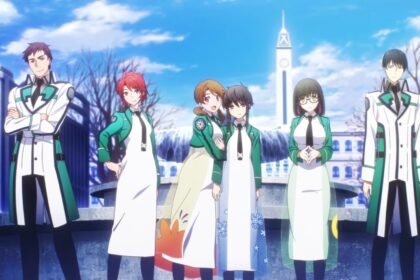Romance has always been a captivating theme in storytelling, and one medium that beautifully portrays this aspect of human emotion is shoujo manga. Shoujo manga, a genre of Japanese comics aimed primarily at young girls, delves into the complexities of love, relationships, and personal growth. With its unique storytelling techniques and cultural nuances, Japanese culture brings a distinct flavor to romance narratives in shoujo manga. In this article, we will explore how Japanese culture is depicted in the genre and how it enhances the portrayal of romance.
Exploring the Cultural Context of Shoujo Manga
Japanese Cultural Values and Etiquette
Japanese culture is deeply rooted in traditional values, and these values play a significant role in shaping the romantic narratives found in shoujo manga. Respect, modesty, and self-sacrifice are highly valued qualities in Japanese society, and they often find their way into the characters and relationships depicted in shoujo manga. The protagonists in these stories are frequently seen navigating complex social dynamics while adhering to societal expectations.
Traditional Gender Roles
In Japanese culture, traditional gender roles have influenced the portrayal of romance in this manga. The concepts of femininity and masculinity are often presented in a specific manner. Female characters are typically depicted as gentle, compassionate, and emotionally vulnerable, while male characters embody strength, protectiveness, and a sense of responsibility. These archetypes create a dynamic that is central to many romantic storylines, exploring the dynamics of power and vulnerability within relationships.
The Importance of Communication and Indirectness
Japanese culture places great importance on indirect communication, and this cultural trait often finds its way into shoujo manga. Characters in these stories tend to be hesitant to express their feelings directly, leading to misunderstandings and misinterpretations. This creates tension and anticipation, which are essential elements in the development of romantic plotlines. The subtle nuances of non-verbal communication, such as blushing, averted gazes, and hesitant gestures, add depth to the portrayal of romance in shoujo manga.
Further Readings: Why Sailor Moon Continues to Capture Hearts
Themes in Shoujo Manga
First Love and Innocence
First love is a common and cherished theme in shoujo manga. Shoujo manga highlights the purity and innocence of young love, capturing the excitement, confusion. And emotional intensity that come with experiencing romantic feelings for the first time. These stories appeal to the readers’ nostalgia and evoke a sense of warmth and familiarity.
Emotional Growth and Self-Discovery
Shoujo manga frequently explores the journey of personal growth and self-discovery through romantic relationships. The protagonists often undergo emotional transformations as they navigate the complexities of love. They learn to understand their own desires, face their fears, and develop a sense of self-worth. This emphasis on personal development adds depth to the characters and resonates with readers who can relate to the challenges of adolescence and young adulthood.
Forbidden Love and Social Barriers in Shoujo Manga
Forbidden love is another theme that dominates. Stories often revolve around relationships that face societal barriers, such as class differences, age gaps, or family disapproval. These obstacles create a sense of tension and longing, as the characters must navigate societal expectations and make difficult choices. The exploration of forbidden love allows readers to experience the thrill of defying conventions and rooting for love against all odds.
Impact and Influence of Shoujo Manga
Cultural Exchange and Global Appeal
Shoujo manga’s depiction of romance through the lens of Japanese culture has garnered a significant following not only within Japan but also internationally. The themes and storytelling techniques have transcended cultural boundaries. Captivating readers from diverse backgrounds. The relatability of the characters’ emotions and experiences. Coupled with the distinct cultural elements, has contributed to the genre’s global appeal.
Influence on Real-Life Relationships
Shoujo romance has had a profound influence on real-life relationships, particularly among its avid readers. The stories often convey important life lessons about love, communication, and personal growth. They inspire readers to reflect on their own relationships, encouraging open communication, empathy, and understanding. Shoujo manga has become a source of guidance and comfort for many individuals navigating the complexities of romance.
Conclusion
Shoujo manga provides a unique and captivating portrayal of romance, intertwined with the rich tapestry of Japanese culture. Through its exploration of traditional values, gender roles, and communication styles. It offers readers a glimpse into the intricacies of Japanese society. The themes of first love, emotional growth, and forbidden relationships resonate with readers on a personal level. While also transcending cultural boundaries. Shoujo manga’s influence extends beyond entertainment, offering valuable insights into real-life relationships and fostering a deeper understanding of the human experience. Whether you’re a fan of the genre or a newcomer, exploring the world of shoujo manga can be a delightful and enlightening journey into the beauty of romance.













